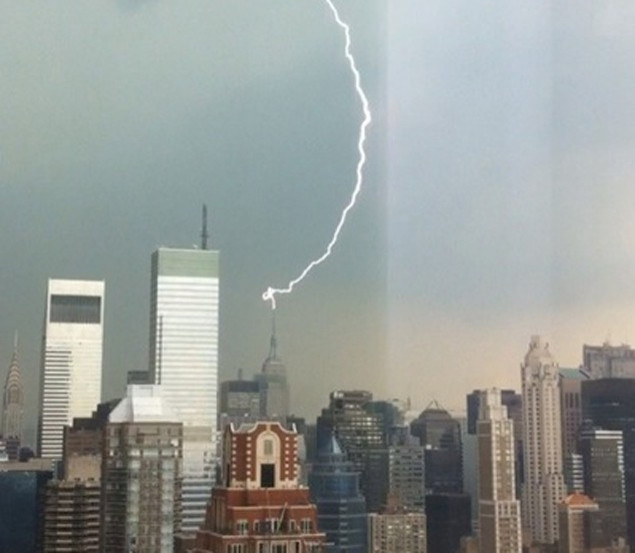When Lightning Strikes: How It Happens, And The Mysterious Side Effect It Can Leave Behind

Thunder and lightning are lashing much of the Eastern seaboard today as Tropical Storm Debby roars up towards Florida and a cold front bears down on the Northeast. New York has already had its fair share of electricity in recent days - on Friday, a bolt from the sky struck the spire of the Empire State Building.
Lightning is sparked by the buildup of massive positive and negative electrical charges within a storm cloud, or opposite charges between the cloud and the ground. The best way to avoid lightning strikes is to get inside a building or a hard-topped car.
In the U.S., an average of 54 people are killed by lightning strikes each year, according to the National Weather Service.
In 2012, NWS has recorded four fatalities from lightning strikes thus far: a 12-year-old Alabama boy who was playing under a tree; a father and son in Louisiana that took refuge under a small metal structure; and a 51-year old man fishing on a lake in Florida.
Many other people survive lightning strikes, but often with permanent debilitating symptoms like sleep disorders, pain, dizziness, joint stiffness and memory loss.
One curious symptom of lightning strike victims is a fractal, fern-like pattern called a Lichtenberg figure that will appear on the skin. These patterns, also called lightning flowers, are not burns, and are still something of a mystery to scientists.
Some researchers believe the pattern is due to an inflammatory response as electric currents pass through tiny blood vessels near the skin. But researchers from St. Anthony Hospitals wrote in the journal Cutis in 2007 that Lichtenberg figures do not correspond to known vascular or neuroanatomic patterns.
© Copyright IBTimes 2024. All rights reserved.





















